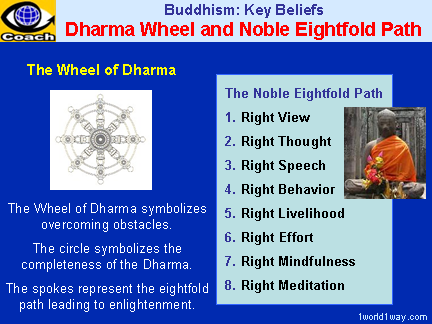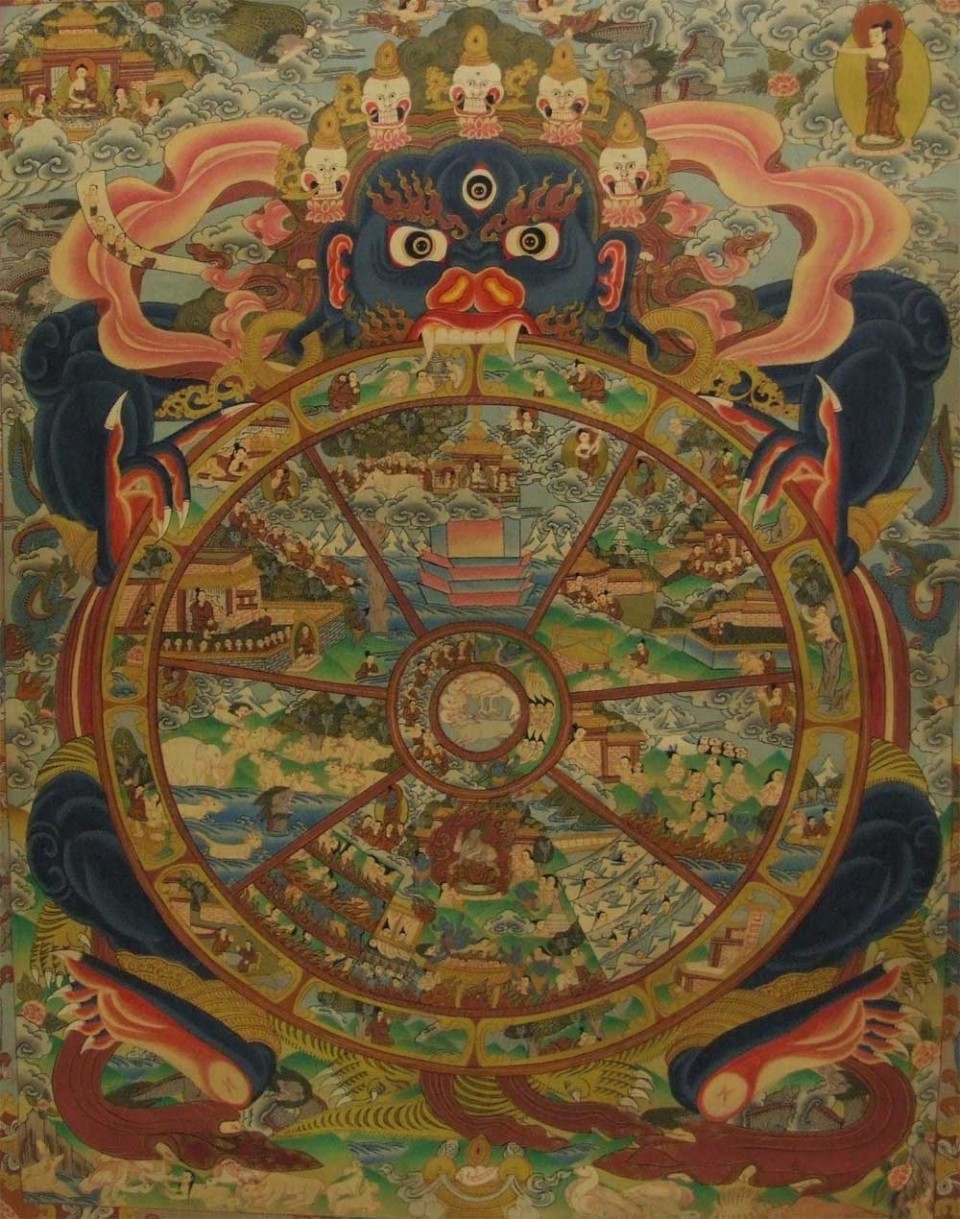

Thangka Painting is one of the purest art forms in Buddhism culture. 'Liberation is Possible' is the indication of Buddha's Finger on the wheel of life.The moon above the wheel represents freedom from the cycle of existence.The devilish figure carrying the wheel represents impermanence.The fourth Layer represents twelve links.The third layer represents the six realms, which is the cycle of existence.The center of the wheel represents three poisons aversion, attachment, and ignorance.The painting explains the cycle of life and death. Having wheel of life painting in the home will protect the home from all the possible negative energy. The wheel Of Life Thangka painting practice is very ancient. In the middle section of Wheel of Life, the six realms are depicted: The Realm of Hungry Ghosts, The Realm of Hell, The Realm of Animals, The Realm of Humans, The Realm of Gods, and The Realm of Demi-Gods or The Realm of Asuras. Meyer, founder of the success motivation institute.Ħ. The wheel of life was invented in 1960 by Paul J. In Buddhism, it is believed that enduring is the real essence of all presence. Yama carries the wheel of life in his hooves.Ĥ. Yama is who protects Buddhist people and Buddhism.ģ. Yama is alsocalled the lord of the underworld.Ģ. In the art of Wheel of Life, who is holding the wheel is known as Yama.

And the Wheel of life was a perfect visual aid for them. The art is targeted at farmers and cowherds because for the targeted people understanding the language and the facts about the Wheel of life was difficult to understand. The key reason behind the making and keeping the wheel of life thangka is to teach the Buddhist philosophy of life. The Wheel is divided into 5 or 6 domains into which a soul can be reborn. It is believed that a person can only be released from this rotating cycle of rebirth only when they reached enlightenment. They believe that there is a continuous cycle of birth, life, and death. The Realm of Demon-Gods or The Realm of Asurasīuddhists have a theory that they follow. In the middle section of Wheel of Life painting, the six realms are depicted:Ħ. Buddhists believe that the wheel is the symbolic representation of the cycle of existence.

The Wheel Of Life is also called The Bhavachakra. The Wheel Of Life is also known as the Wheel Of Cyclic Existence or Wheel of Becoming. The Bhavacakra is referred to as the Wheel of Life. It is believed that the drawing was designed by the Lord Buddha himself to help ordinary people understand the Buddha technique. In Nepal, the Wheel of Life is kept in a simulated form or printed in the thangka. It is a symbolic representation of Samsara (or cyclic existence) found on the outer wall of Tibetan Buddhist Temples and monasteries in the indo-Tibetan region. He was awarded the Nobel Peace Prize in 1989, honorary Canadian citizenship in 2006, and the United States Congressional Gold Medal on 17 October 2007.Thangka symbolizes culture, peace, and purity of art. There, he has helped to spread Buddhism and to promote the concepts of universal responsibility, secular ethics, and religious harmony. This Dalai Lama is the first to travel to the West. Tenzin Gyatso is a charismatic figure and noted public speaker. These talks ultimately failed.Īfter a failed uprising and the collapse of the Tibetan resistance movement in 1959, the Dalai Lama left for India, where he was active in establishing the Central Tibetan Administration (the Tibetan Government in Exile) and in seeking to preserve Tibetan culture and education among the thousands of refugees who accompanied him. In 1954, he went to Beijing to attempt peace talks with Mao Zedong and other leaders of the PRC. Thus he became Tibet's most important political ruler just one month after the People's Republic of China's invasion of Tibet on 7 October 1950. On 17 November 1950, at the age of 15, he was enthroned as Tibet's ruler. He was proclaimed the tulku (an Enlightened lama who has consciously decided to take rebirth) of the 13th Dalai Lama at the age of two. Tenzin Gyatso was the fifth of sixteen children born to a farming family. Jetsun Jamphel Ngawang Lobsang Yeshe Tenzin Gyatso (born Lhamo Döndrub), the 14th Dalai Lama, is a practicing member of the Gelug School of Tibetan Buddhism and is influential as a Nobel Peace Prize laureate, the world's most famous Buddhist monk, and the leader of the exiled Tibetan government in India.


 0 kommentar(er)
0 kommentar(er)
